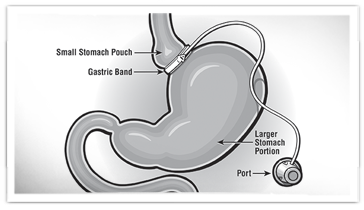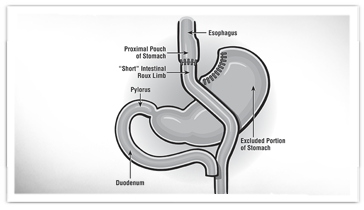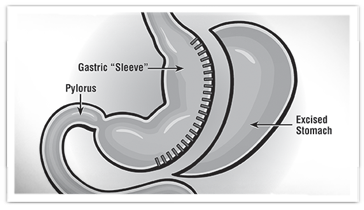How Do I Know If Bariatric Surgery Is Right for Me?
You may have wondered "do I qualify for weight loss surgery?" and while every person's decision is an individual one, there are some guidelines that can help you and your doctor determine if you are a candidate for a weight loss surgery procedure.
Qualifications for Weight Loss Surgery
Inova follows eligibility requirements for weight loss (bariatric) surgery established by the National Institutes of Health (NIH).
Individuals must have a body mass index (BMI) of 40 or greater. In the presence of additional health risks, also known as co-morbidities, you may be eligible for weight loss surgery with a BMI of 35 or greater. This translates to being at least 100 pounds overweight.
The presence of health risks, also called co-morbidities, include high cholesterol, high blood pressure, diabetes and sleep apnea, among others. All patients undergo a psychiatric exam to assure that they are emotionally able to work within the program guidelines after surgery.
BMI Classifications
| Classification | BMI | U.S. Population |
| Overweight | > 25.0 | 60 percent |
| Obese (class I) | 33.0 to 34.9 | 18 percent |
| Obese (class II) | 35.0 to 39.9 | |
| Clinically severe obesity (class III) |
> 40.0 | 5 percent |
What Is Minimally Invasive Weight Loss Surgery?
Our program offers several minimally invasive weight loss surgery procedures. Options may include:
- Laparoscopic Roux-en-Y gastric bypass
- Laparoscopic gastric banding (LAP-BAND®)
These procedures limit the ability of the patient's stomach to store food. Roux-en-Y gastric bypass and gastric banding have both been shown to be safe and effective for weight loss. When we compare these procedures to those with a traditional long abdominal incision, we have seen that the smaller incisions tend to be less painful, faster healing, and resulting in a lower risk of infection and/or hernia formation.
Types of Bariatric Weight Loss Surgery and Other Procedures
Several proven bariatric weight loss surgeries, and a new non-surgical bariatric procedure known as the intragastric balloon, are available at Inova Fair Oaks Hospital. Our nationally recognized and highly experienced bariatric surgeons will expertly guide you as you evaluate the weight loss surgical treatment that suits your lifestyle and overall health.
 Gastric banding is a purely restrictive surgical procedure during which a silicone band is placed around the uppermost part of the stomach, separating the stomach into one small and one large portion. The band is adjustable and can be periodically tightened or loosened depending on the patient's needs.
Gastric banding is a purely restrictive surgical procedure during which a silicone band is placed around the uppermost part of the stomach, separating the stomach into one small and one large portion. The band is adjustable and can be periodically tightened or loosened depending on the patient's needs.
 Roux-en-Y gastric bypass surgery is the most common and popular bariatric surgery in the United States. The surgery involves stapling and partitioning the stomach into a small pouch and connecting the small pouch directly to the small intestine. The smaller stomach pouch restricts the amount of food the patient can comfortably eat. The bypass decreases the amount of nutrients and calories absorbed by the body.
Roux-en-Y gastric bypass surgery is the most common and popular bariatric surgery in the United States. The surgery involves stapling and partitioning the stomach into a small pouch and connecting the small pouch directly to the small intestine. The smaller stomach pouch restricts the amount of food the patient can comfortably eat. The bypass decreases the amount of nutrients and calories absorbed by the body.
Inova Fair Oaks Hospital specializes in mini-incision and laparoscopic gastric bypass surgery. Both of these techniques are less invasive than traditional surgery and allow for a faster, more comfortable recovery.
 The sleeve gastrectomy generates weight loss by restricting the amount of food (and therefore calories) that can be eaten by removing more than 70 percent of the stomach. A smaller stomach shaped like a "sleeve" is left behind. The surgery is purely restrictive and does not involve bypassing the small intestine.
The sleeve gastrectomy generates weight loss by restricting the amount of food (and therefore calories) that can be eaten by removing more than 70 percent of the stomach. A smaller stomach shaped like a "sleeve" is left behind. The surgery is purely restrictive and does not involve bypassing the small intestine.
BPD/DS is a combined restrictive and malabsorptive procedure that reduces the size of the stomach by 70 percent. The pouch created is a bit larger than with other restrictive procedures. The pouch is connected to the lower part of the small intestine and greatly reduces the absorption of calories and nutrients.
The intragastric balloon is ideal for patients that want to lose 30-50 pounds and avoid invasive surgery. The synthetic, sterile fluid-filled balloon sits in the stomach, filling approximately one third of the space inside. This helps you feel less hungry and control your portions. The gastric balloon must be removed after 6 months, after which time dietary support will help you maintain a more controlled diet and therefore your weight loss.
Risks of Surgery
Weight loss surgeries are major operations on patients who often have many risk factors. Complications range from minor to major and immediate to long term. Immediate complications include leaks (1 to 4 percent, some of which would require re-operation), pulmonary emboli (blood clot to the lung), and death (1-4/1,000 patients).
These risks will be reviewed by our weight loss surgeons during our free informational seminars and webinars.
